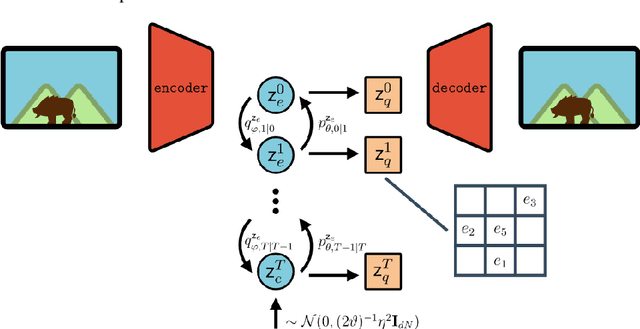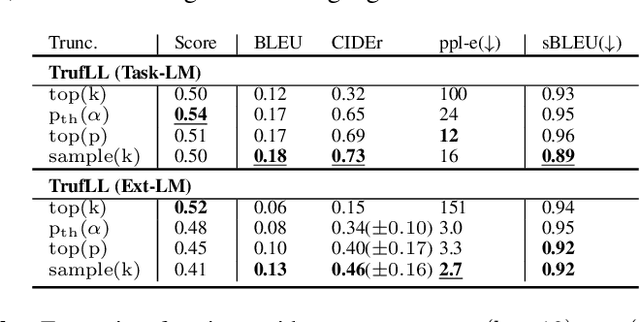Guillaume Quispe
CMAP, IP Paris
Diffusion bridges vector quantized Variational AutoEncoders
Feb 10, 2022



Abstract:Vector Quantised-Variational AutoEncoders (VQ-VAE) are generative models based on discrete latent representations of the data, where inputs are mapped to a finite set of learned embeddings.To generate new samples, an autoregressive prior distribution over the discrete states must be trained separately. This prior is generally very complex and leads to very slow generation. In this work, we propose a new model to train the prior and the encoder/decoder networks simultaneously. We build a diffusion bridge between a continuous coded vector and a non-informative prior distribution. The latent discrete states are then given as random functions of these continuous vectors. We show that our model is competitive with the autoregressive prior on the mini-Imagenet dataset and is very efficient in both optimization and sampling. Our framework also extends the standard VQ-VAE and enables end-to-end training.
Learning Natural Language Generation from Scratch
Sep 20, 2021



Abstract:This paper introduces TRUncated ReinForcement Learning for Language (TrufLL), an original ap-proach to train conditional language models from scratch by only using reinforcement learning (RL). AsRL methods unsuccessfully scale to large action spaces, we dynamically truncate the vocabulary spaceusing a generic language model. TrufLL thus enables to train a language agent by solely interacting withits environment without any task-specific prior knowledge; it is only guided with a task-agnostic languagemodel. Interestingly, this approach avoids the dependency to labelled datasets and inherently reduces pre-trained policy flaws such as language or exposure biases. We evaluate TrufLL on two visual questiongeneration tasks, for which we report positive results over performance and language metrics, which wethen corroborate with a human evaluation. To our knowledge, it is the first approach that successfullylearns a language generation policy (almost) from scratch.
 Add to Chrome
Add to Chrome Add to Firefox
Add to Firefox Add to Edge
Add to Edge